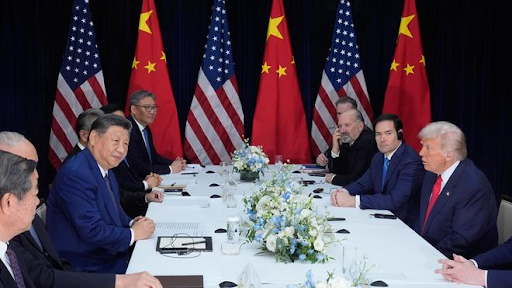





Copyright infringement not intended
Picture Courtesy: https://indianexpress.com/article/business/as-trade-gap-with-uae-asean-widens-india-pauses-talks-with-others-9630537/
The Union Commerce Ministry has paused trade negotiations to develop a new Standard Operating Procedure (SOP) to address rising trade gaps.
India has paused trade negotiations with smaller countries like Oman and Peru because it feels that previous trade agreements have benefitted the partner countries more than India. This has led to a widening trade deficit, meaning India is importing more than it's exporting, which negatively impacts the country’s economy. There's also concern about the outflow of investments from India due to these imbalanced trade deals.
A trade deficit happens when a country imports more than it exports. For example, India has Free Trade Agreements (FTAs) with several countries. However, in some cases, like with the UAE and ASEAN nations, these agreements have led to India importing a lot more from these countries than it exports. This difference is called a trade deficit.
For example, after India signed the Comprehensive Economic Partnership Agreement (CEPA) with the UAE in 2022, India’s trade gap with the UAE grew by more than $5 billion in just eight months. Similarly, India's trade deficit with ASEAN countries grew significantly after signing the ASEAN-India Trade in Goods Agreement (AITIGA), going from $7.5 billion annually in 2011 to about $44 billion in 2023.
|
ASEAN-INDIA AND EAST ASIA SUMMIT: https://www.iasgyan.in/daily-current-affairs/asean-india-and-east-asia-summit |
A rising trade deficit is concerning because it can drain foreign exchange reserves and weaken the national economy. A large trade gap can also lead to less foreign investment, as investors may see it as a sign of instability. For India, this means that while it is opening up its market to other countries, it’s not getting enough benefits in return. This is why India is now rethinking its trade strategy.
India is developing a new Standard Operating Procedure (SOP) for future trade negotiations. The goal is to make sure India gets a fair deal. The new SOP will focus on key issues like labor rights, environmental protections, and trade-offs (compromises made during negotiations).
India is also shifting its focus to larger, more strategically important markets like the European Union (EU) and the UK. Negotiations with smaller countries are on hold because India feels that the returns from those agreements haven't been worth it.
India is also reviewing its past trade agreements to understand why they haven’t worked as expected. For example, the trade agreement with ASEAN is being closely examined to fix any issues with tariffs (the taxes placed on imports and exports). India has seen that it faces higher tariffs compared to its partners, which has disadvantaged Indian exports.
Another step India is taking is becoming stricter about the "rules of origin" — meaning that goods imported under trade agreements must come directly from the partner country, not through a third country like China. There are concerns that Chinese products are entering India through ASEAN countries, bypassing tariffs, which India wants to stop. To address this, India has started investigating and placing anti-dumping duties on certain imported goods.
Despite these efforts, India faces challenges in its trade negotiations. One of the main problems is that Indian negotiators often lack the experience that their foreign counterparts have. In many cases, officials are rotated too frequently, which means they don’t get the time to develop the deep expertise needed for these complex negotiations.
There are also global challenges like the economic slowdown, rising tariffs, and new trade regulations from regions like the EU, such as its Carbon Border Adjustment Mechanism, which makes it harder for Indian exports to remain competitive.
India is taking a more cautious approach to its trade agreements because of the growing trade deficit and investment concerns. By pausing negotiations with smaller countries and focusing on larger markets, developing a new SOP, and reviewing past agreements, India aims to create more balanced and beneficial trade deals in the future. However, challenges remain, both in terms of global trade conditions and the need for stronger negotiating expertise.
Must Read Articles:
Source:
|
PRACTICE QUESTION Q.Discuss the role of the new Standard Operating Procedure (SOP) of the Commerce Ministry in improving India’s trade negotiations. (150 words) |




© 2026 iasgyan. All right reserved